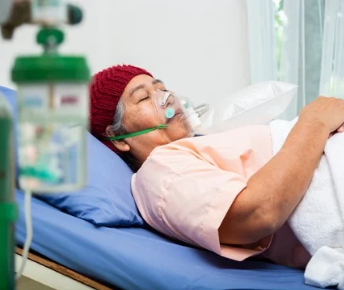A growing concern that affects individuals, families, and entire communities. Across east Africa is alcohol and drug abuse. Many people turn to these substances due to unemployment, poverty, peer pressure, or emotional stress. Over time, what starts as casual use often turns into addiction, leading to serious health, social, and economic problems.
This abuse not only harms physical and mental health but also leads to family conflicts, crime, and loss of productivity. In many areas, limited access to rehabilitation centers and lack of awareness make the problem worse.
While governments and organizations are taking steps to control the situation through education, stricter laws, and treatment programs, progress remains slow due to weak government control.
Understanding the roots of alcohol and drug abuse in East Africa is important to create real change. By addressing the social and economic issues behind it and promoting awareness and rehabilitation, the region can move toward a healthier and more productive future.
Current trends and statistics of alcohol and drug abuse
Currently, substance abuse has been rising steadily across East Africa, affecting both urban and rural communities. Alcohol remains the most commonly used substance, especially homemade brews and cheap spirits that are easily available in local markets.
Many young people, including students and unemployed youth, are turning to alcohol and drugs like cannabis, khat, and heroin as a way to cope with stress, boredom, or difficult living conditions. This has led to growing concerns about addiction and health problems.
Studies and reports from organizations such as the World Health Organization show that roughly 18.2% of Kenyans aged 15–65 experienced alcohol and drug abuse. In coastal areas, heroin use has become a serious issue, while in rural regions, local alcoholic drinks continue to be widely consumed.
Other reports from the World Health Organization and regional health ministries show that more than 15% of East Africa’s youth have experimented with drugs or alcohol before the age of 18. Substance abuse not only affects individuals but also families, workplaces, and communities, leading to rising cases of domestic violence, mental health issues, and school dropouts.
Despite ongoing efforts by governments and NGOs, the fight against substance abuse remains challenging. Limited awareness, poor access to rehabilitation services, and social acceptance of alcohol use continue to make the problem worse across East Africa.
Also Read: Highest Success Rate of Alcohol and Drug Rehab Centres
Causes of Alcohol and Drug Abuse
Alcohol and drug abuse in East Africa is influenced by many social, economic, and personal factors. One of the main causes is unemployment and poverty, which push many young people to turn to substances as a way to escape stress or hopelessness.
Peer pressure and curiosity also play a big role, especially among teenagers who go to parties and, in trying to fit in with friends, end up developing party drug addiction just to fit in with friends.
Cultural acceptance and availability of alcohol further worsen the issue. In many communities, drinking is seen as a normal part of social life or celebrations, which can blur the line between moderate use and substance abuse. Moreover, easy access to cheap and unregulated substances, such as local brews or street drugs, increases the risk of widespread consumption.
Family problems, emotional neglect, and lack of guidance can also drive individuals toward drugs and alcohol as a form of comfort or relief. Easy access to cheap and unregulated substances, such as local brews or street drugs, makes the situation even worse.
Many people struggling with substance abuse do not receive the help they need because of the high cost of treatment or the lack of rehab centers in their area.
Cultural acceptance, limited education on the dangers of drug abuse, and weak implementation of drug laws also contribute to the problem. Addressing these root causes with awareness, support, and accessible rehab programs is key to reducing substance abuse.
Also Read: Relapse Prevention Strategies for Managing Triggers and Risks
Impact of alcohol and drug abuse on east African society
Alcohol and drug abuse has affected every part of life in East African society. The problem touches people from all walks of life, young and old, rich and poor and has far-reaching social, economic, and health consequences.
Different types of substance abuse, including khat, and heroin, have led to a rise in addiction cases across the region. Many individuals, especially the youth, start using these substances for fun or stress relief but eventually lose control, which damages not only their own lives but also their families and communities.
One of the biggest impacts of alcohol and drug abuse is on health. It increases the risk of diseases such as liver failure, heart problems, depression, and anxiety. Mental health issues are growing as addiction deepens, yet few people seek help because of shame or lack of access to proper drug rehab services. The social effects are also severe, families break apart, domestic violence rises, and many children drop out of school due to neglect or financial instability caused by addiction.
Economically, substance abuse has weakened productivity. Many young people, who should be the driving force of the region’s development, have ended up unemployed or unable to work effectively because of addiction. Crime rates, including theft and drug trafficking, have also gone up in several East African cities as individuals try to fund their habits.
Also Read: Marijuana and Anxiety: Relief or Risk?
Rehabilitation and Treatment Programs for Alcohol and Drug Abuse
Rehabilitation and treatment programs in East Africa are becoming very important. Alcohol and drug abuse continue to affect millions of people across the region. Many individuals struggling with addiction are now turning to drug rehab centers for help and guidance. These centers provide a safe and supportive environment where people can recover from addiction under the care of trained professionals.
A therapist plays a key role in the recovery process. They do help the individuals understand the root causes of their addiction, manage cravings, and develop healthier coping mechanisms. Therapy sessions often focus on emotional healing, self-awareness, and building stronger relationships with family and friends.
However, one common question remains: how effective is drug rehab? The success of these programs often depends on consistency, family involvement, and follow-up support. While some people achieve lasting recovery after rehab, others relapse due to limited access to continued care, or financial barriers.
With greater community support and better-trained professionals, drug rehab in East Africa has the potential to change thousands of lives. Encouraging early treatment, promoting education, and strengthening aftercare programs can make rehabilitation more effective and help people suffering from addiction find hope and a new beginning.
Also Read: Ayahuasca: Use, Benefits, and Side Effects
Conclusion
Alcohol and drug abuse in East Africa continues to be a serious challenge that affects individuals, families, and entire communities. The growing problem of alcohol and substance abuse is not just a health issue but also a social and economic one. Many people, especially young adults, fall into addiction because of unemployment, peer pressure, or emotional struggles.
However, there is still hope. With better awareness, community support, and stronger treatment systems, recovery is possible. Drug rehab centers are playing an important role by giving people a safe space to heal and rebuild their lives. Similarly, rehab for alcoholics offers special care for those battling long-term alcohol dependence, helping them return to a healthy and productive life.
To create lasting change, East Africa needs to invest more in prevention programs, education, and accessible rehabilitation services for alcohol and drug abuse. By working together with families, governments, and communities which will lead them to a brighter future
Frequently Asked Questions
Which drugs are most commonly used in East Africa?
The most commonly used drugs in East Africa include alcohol, cannabis, khat (miraa), and heroin. In coastal regions like Kenya and Tanzania, heroin use has become a growing concern, while khat and local alcohol remain widespread in rural areas. Increasing use of party drugs and prescription medications among youth is also an emerging problem.
How is cheap alcohol affecting local communities?
Cheap alcohol is harming local communities by increasing health problems, domestic violence, and poverty. Many people, especially youth, turn to unsafe home-brewed drinks, leading to addiction and even deaths from toxic brews. The easy availability of cheap alcohol weakens families, reduces productivity, and creates long-term social and economic challenges in many East African regions.
Why is youth drug use rising across East African countries?
Youth drug use is rising across East Africa due to unemployment, peer pressure, and stress from difficult living conditions. Many young people turn to drugs for escape, recreation, or to fit in socially. Easy access to cheap substances, weak law enforcement, and limited awareness about the dangers of addiction make the problem even more widespread.
What challenges do rehab centers face in the region?
Rehab centers in East Africa face major challenges such as limited funding, shortage of trained addiction therapists, and poor infrastructure. Many centers struggle to provide consistent care for alcohol and drug abuse due to high costs and lack of government support. Social stigma and low awareness about addiction also prevent many people from seeking timely help and completing treatment.
How are governments and NGOs responding to growing addiction rates?
Governments and NGOs in East Africa are responding to rising addiction rates through awareness campaigns, stricter drug laws, and expanding rehab services. They’re working to educate communities, support youth programs, and train health workers in addiction recovery. However, limited resources and poor coordination still make it difficult to meet the growing need for treatment and prevention of alcohol and drug abuse.
























 Yes, many offer serene environments and solid therapeutic frameworks. However, quality varies, so it’s essential to research accreditation, staff credentials, and therapeutic depth.
Yes, many offer serene environments and solid therapeutic frameworks. However, quality varies, so it’s essential to research accreditation, staff credentials, and therapeutic depth.




